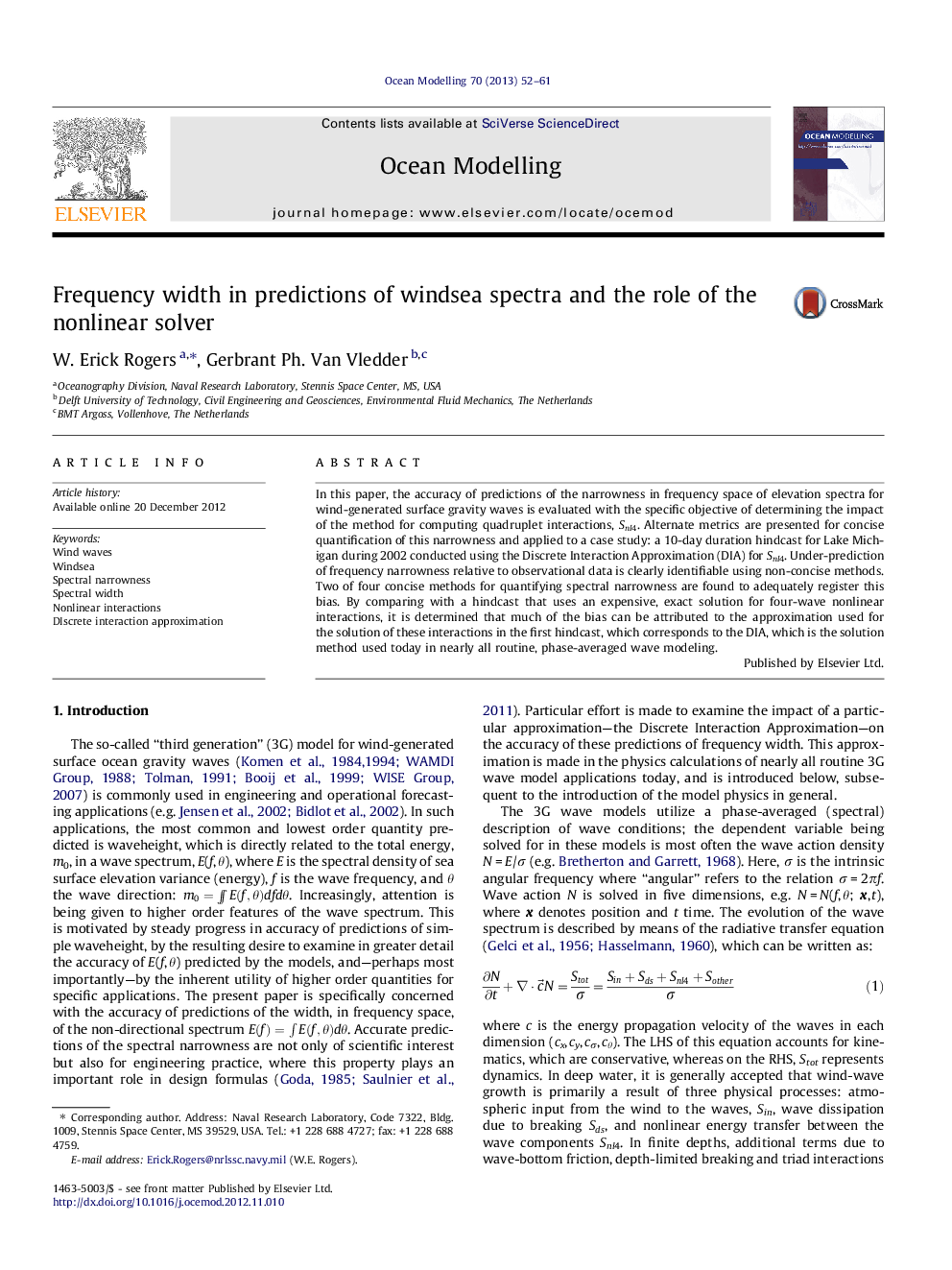| Article ID | Journal | Published Year | Pages | File Type |
|---|---|---|---|---|
| 4552092 | Ocean Modelling | 2013 | 10 Pages |
In this paper, the accuracy of predictions of the narrowness in frequency space of elevation spectra for wind-generated surface gravity waves is evaluated with the specific objective of determining the impact of the method for computing quadruplet interactions, Snl4. Alternate metrics are presented for concise quantification of this narrowness and applied to a case study: a 10-day duration hindcast for Lake Michigan during 2002 conducted using the Discrete Interaction Approximation (DIA) for Snl4. Under-prediction of frequency narrowness relative to observational data is clearly identifiable using non-concise methods. Two of four concise methods for quantifying spectral narrowness are found to adequately register this bias. By comparing with a hindcast that uses an expensive, exact solution for four-wave nonlinear interactions, it is determined that much of the bias can be attributed to the approximation used for the solution of these interactions in the first hindcast, which corresponds to the DIA, which is the solution method used today in nearly all routine, phase-averaged wave modeling.
► Four methods for concise quantification of frequency width (one new here) are tested. ► Two of the four methods are found to properly reflect identified bias. ► The DIA method for Snl4 contributes to overprediction of frequency width. ► Bias in frequency width is reduced to virtually zero through use of EXACT-NL. ► However, scatter of the same increases when using EXACT-NL.
